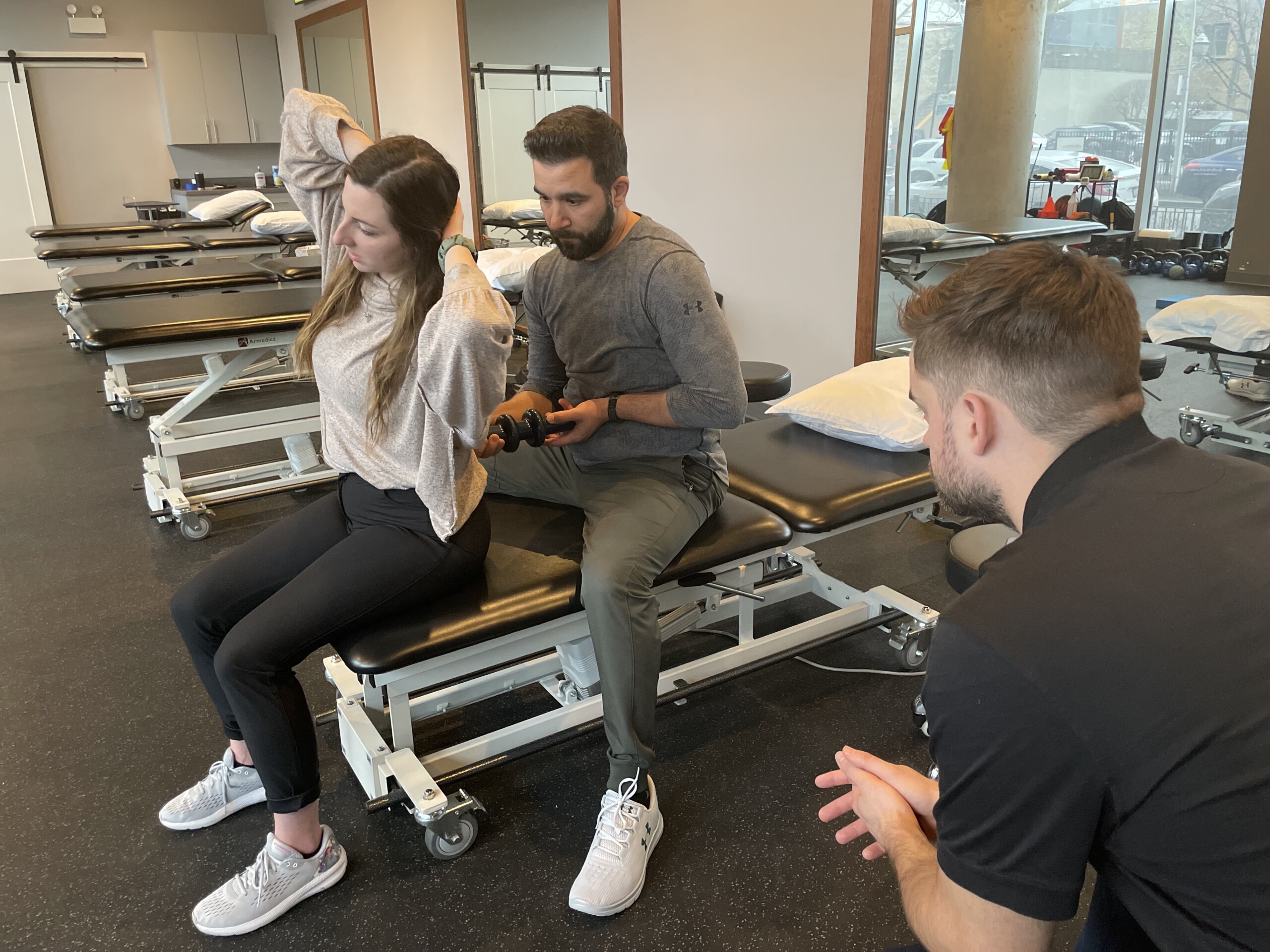What is the Role of a Student Physical Therapist?

If you’ve ever been to a physical therapy clinic, you may have encountered a student working alongside the physical therapist you came to see.
What does this mean for your treatment and what is the role of the student PT?
Depending on what stage of their Doctorate of Physical Therapy program they are in, this may be either the final step prior to graduation or a break in the coursework for them to apply the knowledge they’ve learned in the classroom. Most DPT programs have up to 3 or 4 clinical rotations, which serve as an opportunity for students to refine the skills that will be utilized throughout their careers. These skills range from designing exercise prescriptions assisting in the recovery of injuries, such as an ACL tear, to improving their critical thinking skills which will allow for more efficient and accurate diagnoses and treatments.
Throughout student’s time in the clinic they are working with a licensed PT who acts as a mentor to supervise, answer questions, provide feedback, and foster growth. Abiding by the practice act of the state, these rotations allow for competence and understanding of applying education and knowledge to the workplace setting. Students consistently learn and evolve with each patient interaction and each week spent working in the clinic. A student may begin by shadowing or assisting the PT they are working with as they acclimate to the new clinical setting.
As a student of physical therapy progresses through their clinical they will take on responsibilities such as:
- Conducting assessments: You may be responsible for performing certain assessments to help the physical therapist identify areas of weakness, limited mobility, or pain that need to be addressed.
- Developing treatment plans: Based on the assessment results, you will help develop a treatment plan that may include exercises, stretches, manual therapy, and other interventions designed to improve the patient’s function, strength, and overall well-being.
- Assisting with exercises: During therapy sessions, you will assist the patient with performing exercises and activities designed to improve their mobility and function.
- Monitoring progress: You will help monitor the patient’s progress and adjust the treatment plan as needed to ensure that the patient is making progress towards their goals.
- Providing education: You may provide patients with education
By the end of their final clinical rotation, students are able to perform each of these tasks with no supervision and by graduation are deemed ready to enter the workplace. While it may be uneasy to work with a student or seem daunting at the time here are a few things to remember:
Benefits to working with a student physical therapist!
- 2 is better than 1: Student physical therapists are always supervised by a licensed physical therapist, which means that the patient benefits from the expertise and guidance of two healthcare professionals instead of just one.
- Fresh perspective: As a student, a physical therapy student may bring new and innovative approaches to the treatment of conditions, which can provide a fresh perspective and help to identify new solutions.
- More time: Student physical therapists often have more time to spend with patients compared to licensed physical therapists, which allows them to focus on individualized care and provide more attention to detail.
- Current knowledge: Physical therapy students are typically up-to-date with the latest research, techniques, and technologies in the field of physical therapy, which means that they can offer the most current and effective treatment options available.
React Physical Therapy takes great pride in being a teaching institute. Understanding the importance of teaching and guiding future professionals in their application of techniques and clinical reasoning. All of our current Physical Therapists were once students, and many of our current therapists were once students with React Physical Therapy. All students are trained in our method of assessment and treatment, including our proprietary Reavy Method. As therapists, we encourage patients to work with students when available alongside the treating PT and always inform the patient prior to treatment beginning of the possibility. As a patient, you reserve the right to decline to work with a student physical therapist at any time.